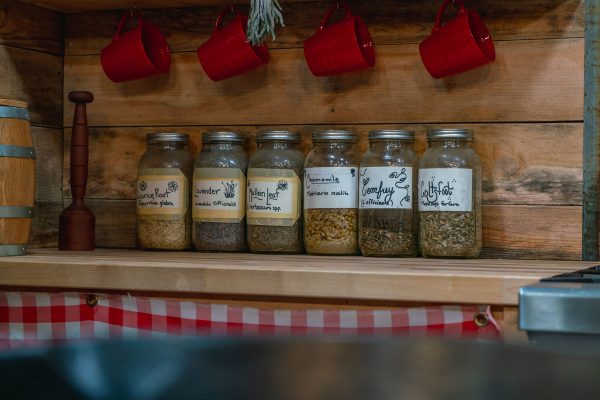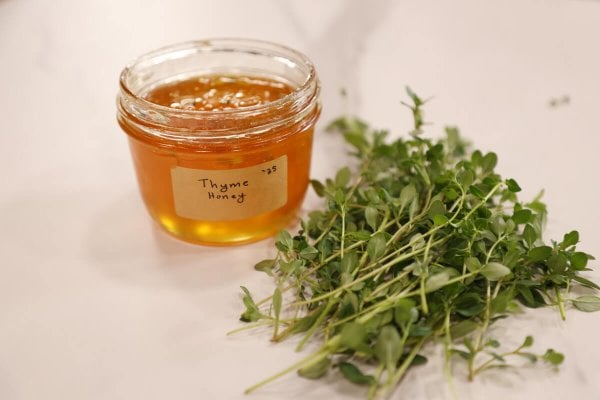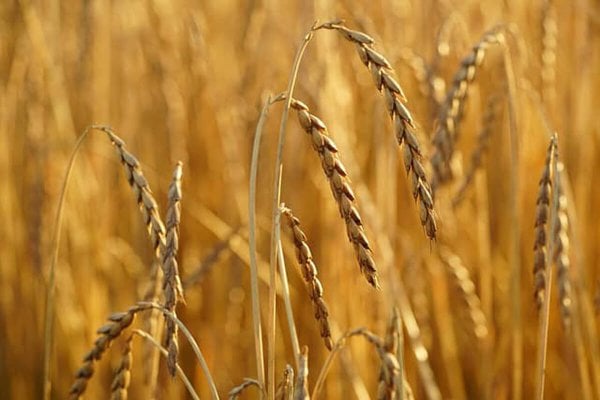
Basil is considered the “king of herbs,” with over one hundred types of basil spanning the globe. Italian, Asian, American and European cultures have used this extraordinary culinary herb for thousands of years.

Use this guide to learn how to grow basil from seed in an indoor pot or plant outdoors. It won’t take long before you are ready to harvest.
Why You Should Learn How to Grow Basil
Herbs are relatively easy to grow and have many uses, making them a great addition to my kitchen and medicine cabinets. We like to grow dill, comfrey plants, rosemary plants, cilantro, and more.
Basil is an excellent choice if you are considering starting an instant garden or growing basil indoors using container gardening methods.
If your goal is to grow a year’s worth of food, but you don’t have enough planting space yet, I encourage you to begin growing a year’s worth of herbs.
You will be amazed at how much money you will save by producing your own, and it doesn’t take much space if you grow vertically using a Greenstalk Vertical Planter.
The Italian saying “where salt is good, so is basil” is so true.
I have grown many varieties, and Genovese and Sweet Italian Large Leaf are my favorites when it comes to flavor for culinary use. Additionally, when using companion planting methods, tomatoes will pick up the subtle hint of Italian basil flavor when planted together; delicious!
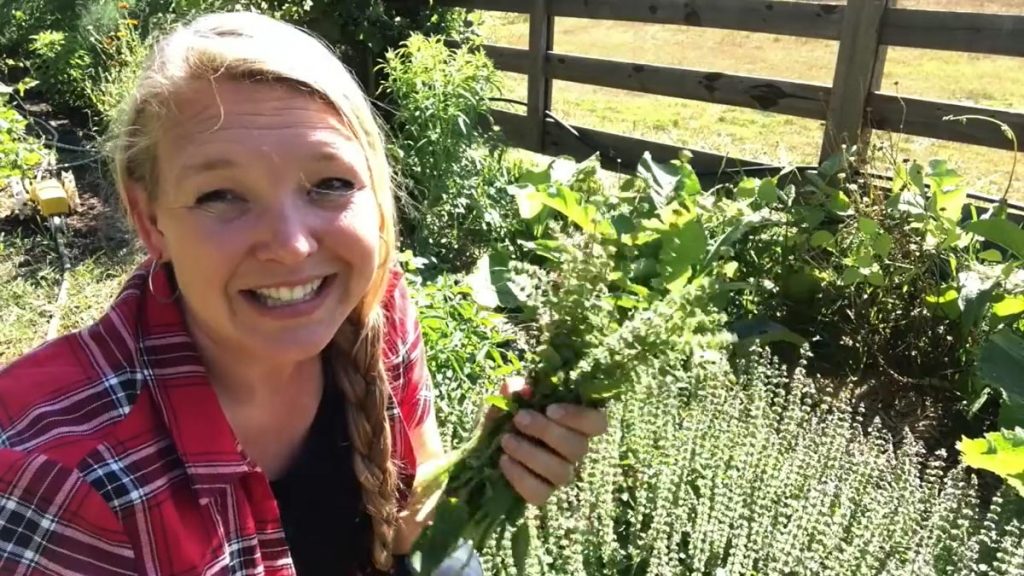
Basil Varieties
Basil (Ocimum basilicum) is most notably known as an annual and must be planted yearly in the garden. However, in some climates, basil will readily self-sow and come back year after year on its own. In colder climates like ours, it’s best to start basil indoors 4-6 weeks before the last frost date and plant out well after the chance of frost has passed.
There are over 100 varieties of basil; here are a few of my favorites.
- Sweet Italian Large Leaf Basil – Commonly called Sweet Basil, it multiplies quickly with large leaves and produces well until the first frost.
- Genovese Basil – Genovese Basil is a wonderful choice with its deep sweet Italian basil flavor and large leaves for pesto and tomato-based dishes. It preserves well, maintaining its flavor and color.
- Citrus Basil – As the name says, these varieties have a citrus flavor. Sweet Dani has a lemon and lime flavor and is delicious in homemade flavored water.
- Purple Basil – The distinct purple color of purple basil adds a splash of color with the familiar basil flavor to culinary dishes. It is popular in floral arrangements with its beautiful color and fragrance.
- Thai Basil – (Ocimum basilicum var. thyrsiflora) Native to Southeast Asian cuisines, Thai Basil has a licorice flavor and aroma, with a purple stem and smaller leaves.
- Fine Nano Basil – This basil plant has small leaves with big flavor making it a good choice to grow in an indoor container garden.
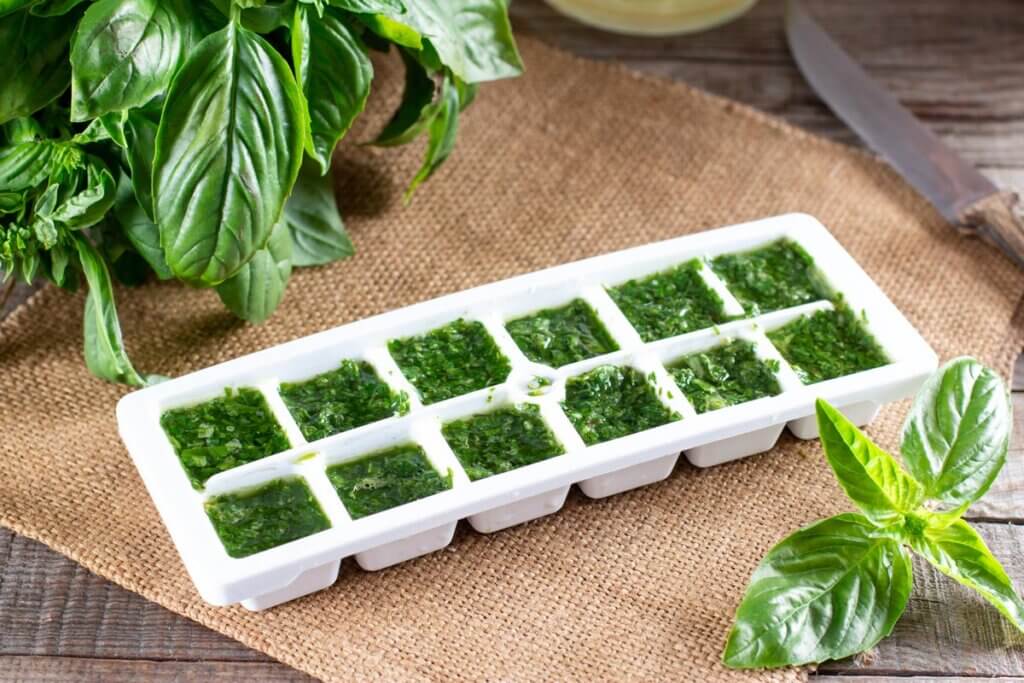
Ways to Use Basil
You can use basil in various foods and drinks. Here are some of our family’s favorites.
- Beverages – Basil adds a refreshing flavor to instant herbal iced tea (cold brew) and for homemade natural water flavoring.
- Salads and Dressings – Adding basil to the fresh greens we grow year-round boosts the salad’s flavor. The homemade vinaigrette dressing completes the salad with the sweet basil addition.
- Bread – Using basil in herbed flatbread as one of the variations for no-knead bread dough is delicious. Homesteading Hack: Having this 5-minute no-knead bread dough recipe on hand helps make mealtime more efficient.
- Sauces – Basil is a flavorful addition to quick and easy pan sauces, bringing a decadent depth of flavor.
- Ferments – Basil ferments well, adding flavor to fermented tomatoes, easy homemade lacto-fermented mayo, and easy homemade fermented garlic.
- Main Dishes – We enjoy the flavor of fresh basil in keto-friendly pizza poppers, our tomato-based dishes, and raw marinara sauce. My easy freezer-meal cooking tips show how herbs like basil can enhance your meals.
- Eggs – Basil adds a delicious flavor to egg-based dishes such as this flexible frittata recipe for any meal of the day.

How to Grow Basil
Basil is a warm weather herb and prefers moist, well-drained soil and plenty of sunshine. If it’s a consistently hot climate (90°F and above), basil appreciates a semi-shady place to take a break from the sun. It will produce a nice strong flavor in these conditions.
Depending on the variety, basil will grow anywhere between 12” to 36” and companions well when growing garlic, tomatoes, and peppers. This herb repels flies and mosquitos with its aroma and keeps aphids away.
Planting
Basil prefers to be started from seed indoors but can be directly sown into the soil if needed. It’s helpful to familiarize yourself with the varieties and learn how to read seed packets to grow basil from seeds before planting.
Learning how to choose the best vegetable seeds for your garden is a good idea if this is all new to you. Learning about the different varieties and what they provide helps the planting process go smoother.
Basil prefers well-drained, loamy, sandy soil with a pH of 6.5-7 (neutral.) Testing your soil pH is easy and will give you the information needed to grow basil in prime soil conditions.
We make homemade compost, adding it to the potting mix and again to the soil when planting in the ground. Homemade compost or compost tea is sufficient for most garden plants, especially herbs like basil.
Plant basil indoors weeks before the last spring frost, and pot up your seedlings before planting in the ground. This combination will give your basil a good, solid start.
Living in a northern climate, the growing season is short, and time is precious, so starting seeds indoors works well for us. If you also have a short growing season, you will benefit from knowing when to start seeds indoors.
You can sow seeds directly in the ground if you live in warmer climates with a longer growing season.
Space your basil plants 12” to 18” apart, providing space for the plant to grow and good air circulation to help prevent powdery mildew and spider mites. Basil doesn’t do well if the soil is dry; keeping the soil moist but not soggy is best.

Growing
Basil is from the mint family (Lamiaceae) and will spread and multiply through its roots and flowers that drop seeds if it is an environment it loves. It’s a prolific plant that needs management and will provide ample amounts of basil with just a few plants. Cuttings from mature plants are great to share with friends!
When the plant is about four to six inches tall, gently pinch off the top leaves and trim the branches so they will start to spread out and up. Only cut back one-third of the plant at a time to encourage new growth. The bushier the plant, the more leaves it will provide as it grows.
Once it has grown to eight to ten inches in height and produces large leaves, you can harvest what you need.
Homesteading Hack: During the growing season, be sure to pinch off a flower bud if it starts to form so it doesn’t go to seed. You want all the energy to grow large leaves with a strong flavor and aroma.

Harvesting
When you harvest basil leaves, gently pinch them off from the end of the stem, don’t pull them off; pinch with your fingers to encourage more plant growth. The plant will get bushier and continue producing many leaves until the first frost.
Even though you may not use all the leaves, it’s a good idea to pinch them off the plant so it doesn’t go to seed. Preservation is simple, so keeping up with production will be worth the effort!
Homesteading Hack: If your basil flowers before you get to it, basil flowers are also edible and very flavorful!
Basil is a crop that will not survive a frost. Keeping up on harvesting and preserving what you have grown before the first frost is beneficial.
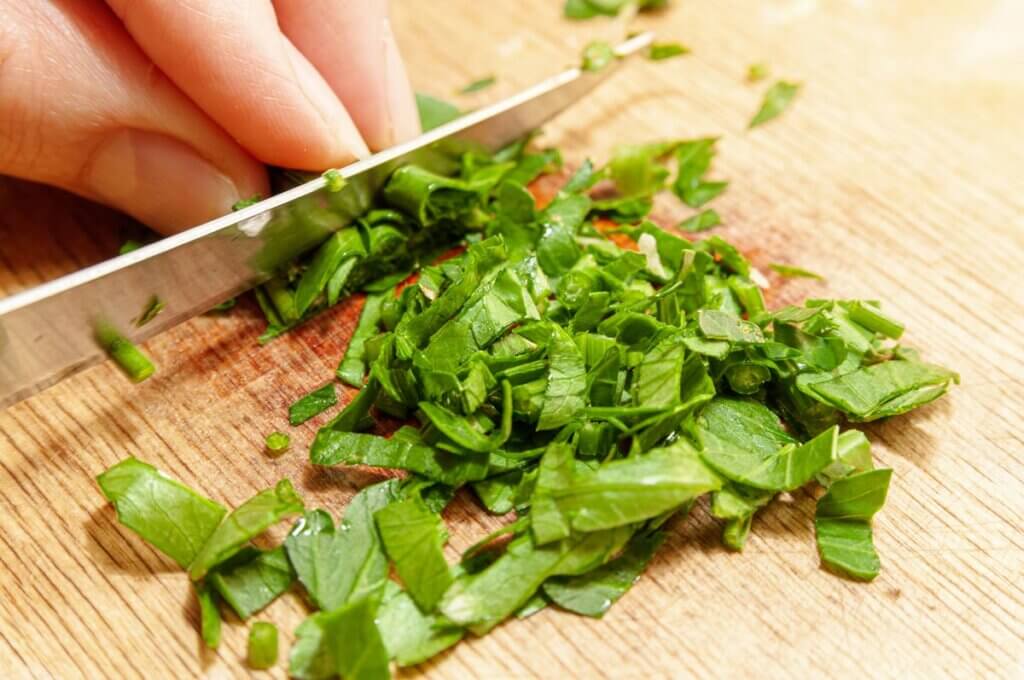
Preserving
You have several options for preserving basil for long-term storage.
- Freezing – Knowing how to freeze basil with olive oil is easy and helpful when making bread soup or easy white bean chicken chili to warm the bones on a cold winter day. Simply drop a cube of frozen basil into these recipes for a flavor boost reminiscent of summer.
- Salt – Preserving herbs in salt is an ideal method for basil. This technique has been around for years because it works so well.
- Freeze Drying – Freeze drying is not the same as dehydrating. With the freeze-drying method, basil will rehydrate well, returning it to a fresh texture and flavor.
- Dehydrating – Drying fresh herbs is a standard method for preservation, but basil is a tender herb and won’t hold its flavor well. For this reason, I recommend using one of the other three methods.
Homesteading Hack: The end-of-season stems and leaves can be preserved in a jar of water, covered lightly with a plastic bag and stored in the refrigerator for up to two weeks.
That extra bit of time to preserve or use the abundance of basil during harvest season is nice to have when getting ready for a busy preservation day.
Whether you’re a first-time gardener or a seasoned one, growing and preserving culinary herbs can be so much fun. My years of experience have given me the passion to share what I have learned and pass it on to you with this free download, preserving culinary herbs.
This tried-and-true information will teach you step-by-step the tips and tricks to drying, freezing and salting culinary herbs. Sign up for free, and get instant access to see how easy it is to preserve your herbs!












